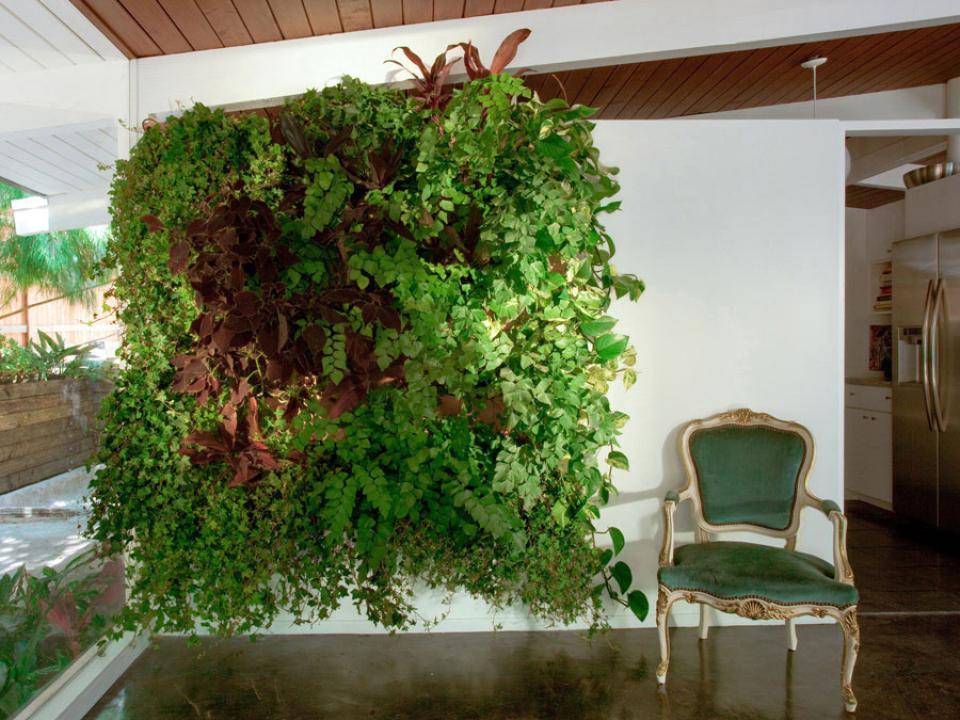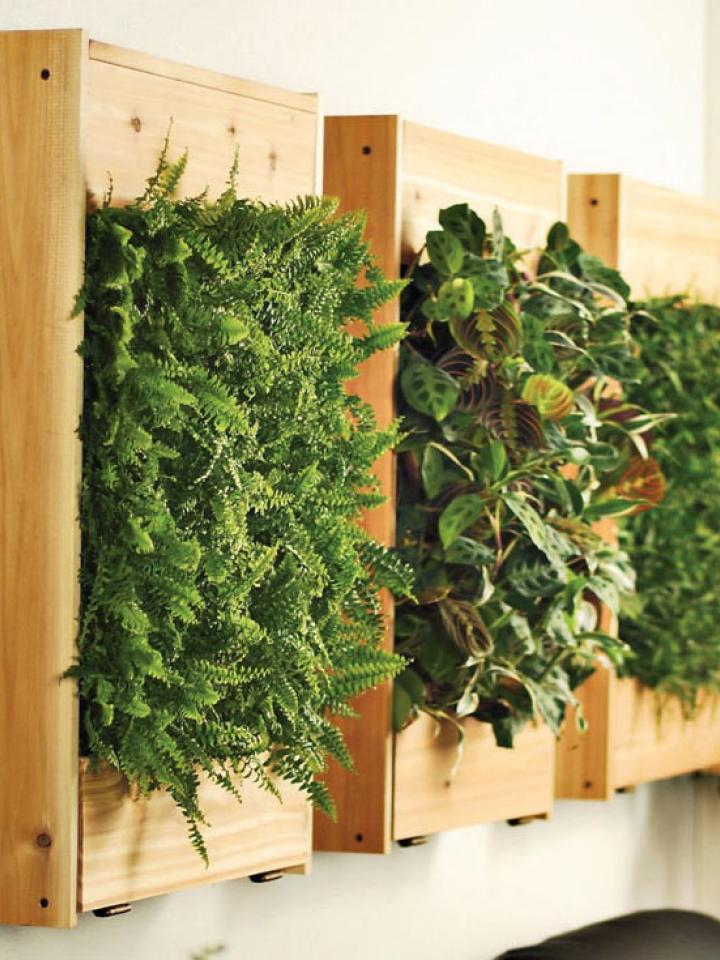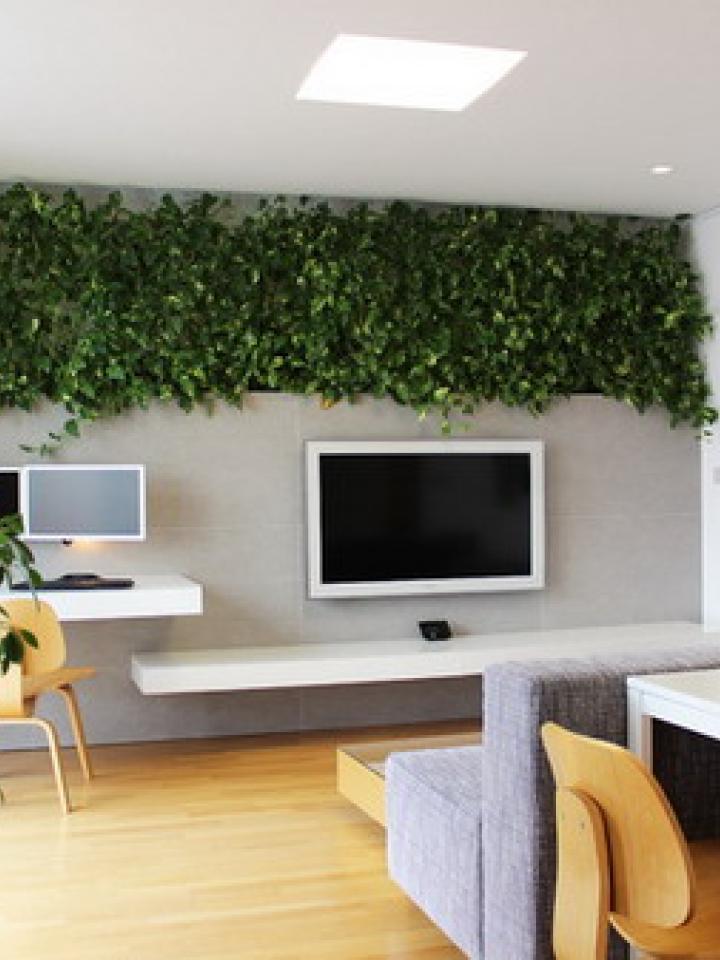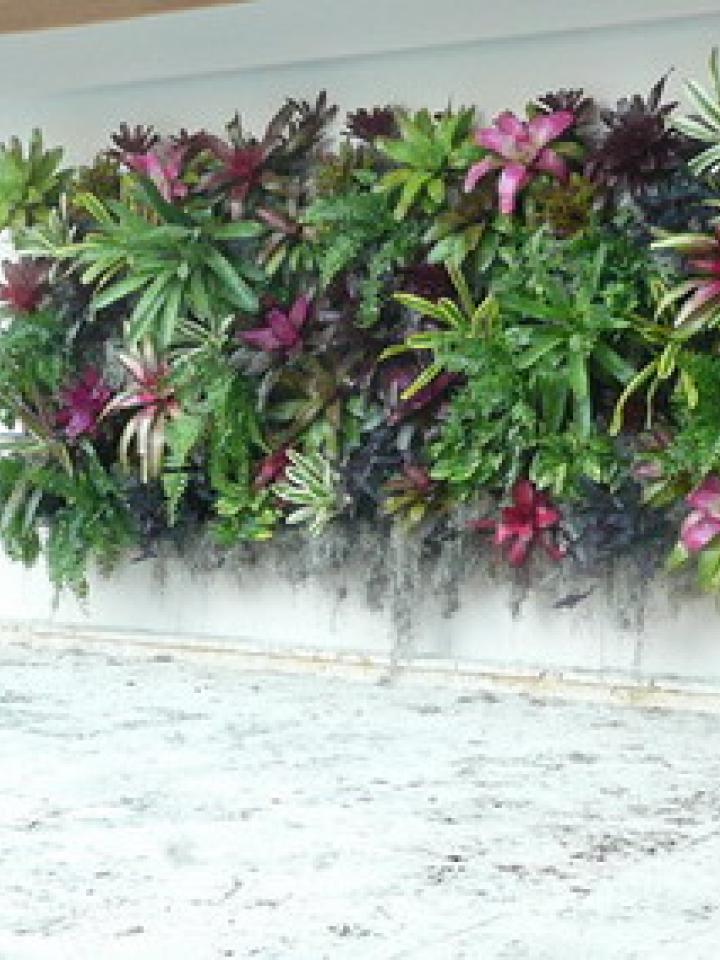Five benefits of living walls
1. They reduce city pollution
Plants purify the air by filtering harmful pollutants, as well as releasing oxygen into the atmosphere. This is particularly useful in heavily polluted urban areas. A study found that green walls could have a significant impact on the gaps between large buildings (‘urban street canyons’), which are a notorious hotspot for pollutants.
2. They purify your home and office
Living walls can also purify the air in your home and office by absorbing the harmful chemicals released by household products, furniture and office equipment. Find out more about this in our guide to the best indoor air-purifying plants.
3. They can boost office productivity
In a recent experiment at two large commercial offices in the UK and The Netherlands, it was found that the presence of plants significantly increased workplace satisfaction and self-reported levels of focus – as well as perceived air quality. So if that’s the effect a few pot plants can have, imagine the impact of a whole wall full of living greens.
4. They work in small spaces
Vertical gardens also open up the possibilities for budding gardeners with limited space, such as those living in a city apartment where floor space is at a premium.
5. They can reduce energy costs
Foliage around a building acts as an insulating jacket, which keeps the building warmer in winter and cooler in summer. This not only reduces carbon emissions but saves on heating and air-conditioning bills.
Read more about living walls and DIY inspirations here.








